As was the case in many places, WWII comprehensively overturned the established order in Southeast Asia. The defeat of France in 1940 left the Vichy government with a precarious hold on its colonies, particularly those in the Far East. The British were not particularly interested in allowing the French to send reinforcements, while the Japanese, allies of Germany, wanted the colonies as a base for their campaign against the British in Malaya. They swiftly moved in, keeping the French administrators as a puppet government. To oppose them, a communist revolutionary named Ho Chi Minh founded a group known as the Viet Minh as an umbrella group for those dedicated to Vietnam's independence. When the Japanese surrendered, he announced the creation of the Democratic Republic of Vietnam.
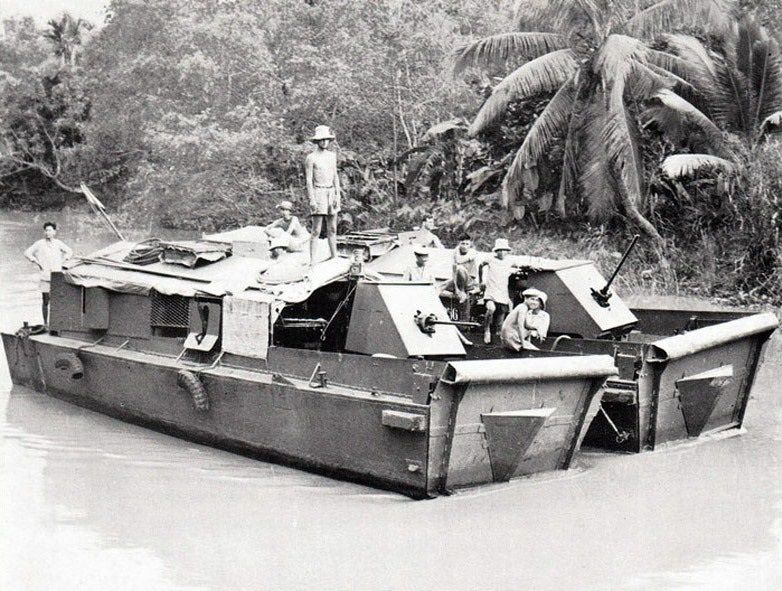
French assault boats in Vietnam
This came as an unpleasant surprise to the French, who were intent on reclaiming their prewar colonial empire, and had secured the agreement of the other allied powers for such a move. A joint Franco-British force disarmed the Japanese in Indochina and returned the French to power, which obviously didn't sit well with the Viet Minh. An insurgency broke out almost immediately, and the French soon found that the march of technology hadn't changed the fact that the best way to move troops around was via the extensive river systems in both the north and south of Vietnam.
The French had one major advantage that previous riverine forces had lacked. WWII had seen production of landing craft on a massive scale, and it turned out that said landing craft were perfect for the rivers of Vietnam.1 Their shallow draft meant that they could pass even on minor tributaries, and even if they did run aground, they were designed to get off without damage. They were also very cheap, which meant that large forces no longer had to be towed on barges or carried on requisitioned civilian craft. Some were left more or less unmodified and carried troops, while others were converted as gunboats or even command craft.
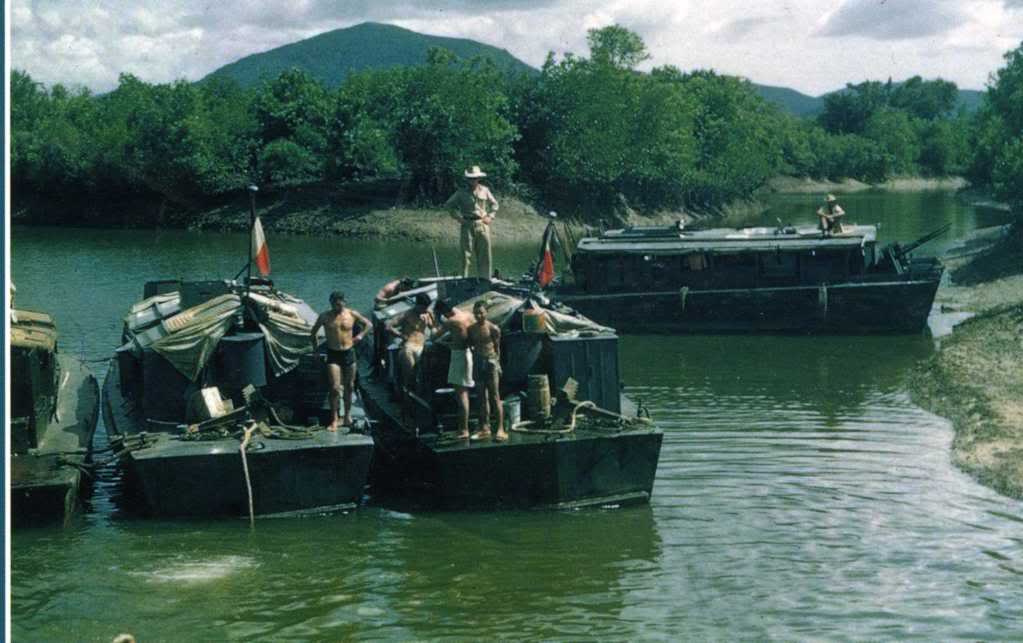
Boats of a Dinassaut
In 1947, the French had formed permanent riverine warfare groups integrating both the troops and the landing craft to carry them from site to site, each known as a "Division Navale d'Assaut", abbreviated Dinassaut. A Dinassaut had a dozen or so landing craft, mostly LCVPs and LCMs, usually with an LCI flagship, set up to transport a company of infantry anywhere on the river. These units proved extremely effective, although increasing Viet Minh firepower meant that the boats quickly sprouted extra armor and weapons ranging from numerous machine guns to 40mm cannon and mortars.
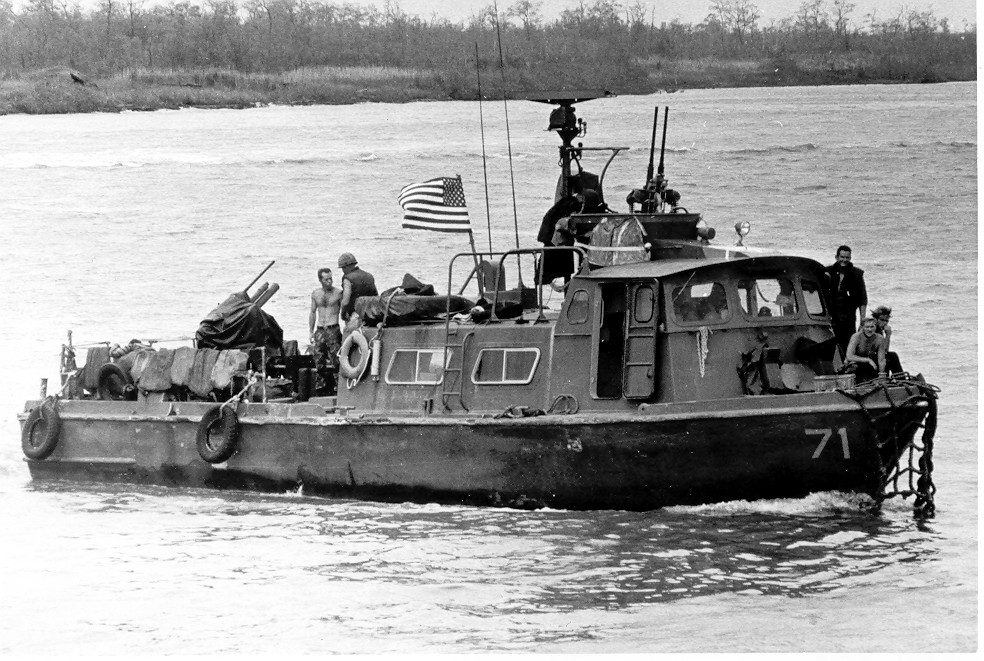
A Swift Boat
Ultimately, while the Dinassauts did excellent work in securing the rivers and canals that dotted Vietnam, participating in the French victory on the Day River, general French incompetence at counterinsurgency and growing domestic opposition to the French presence in Indochina made withdrawal inevitable. The French defeat at Dien Bien Phu, which could be resupplied only by air, was the final catalyst, and Vietnam was partitioned between the Communists in the North and the Republic of Vietnam in the South. Even before the final French withdrawal, they had begun to set up the South's Navy, including riverine forces. The communists were no happier with the new southern government, which placed a great deal of emphasis on its riverine forces, the Dinassauts being replaced by the battalion-scale Riverine Assault Groups.
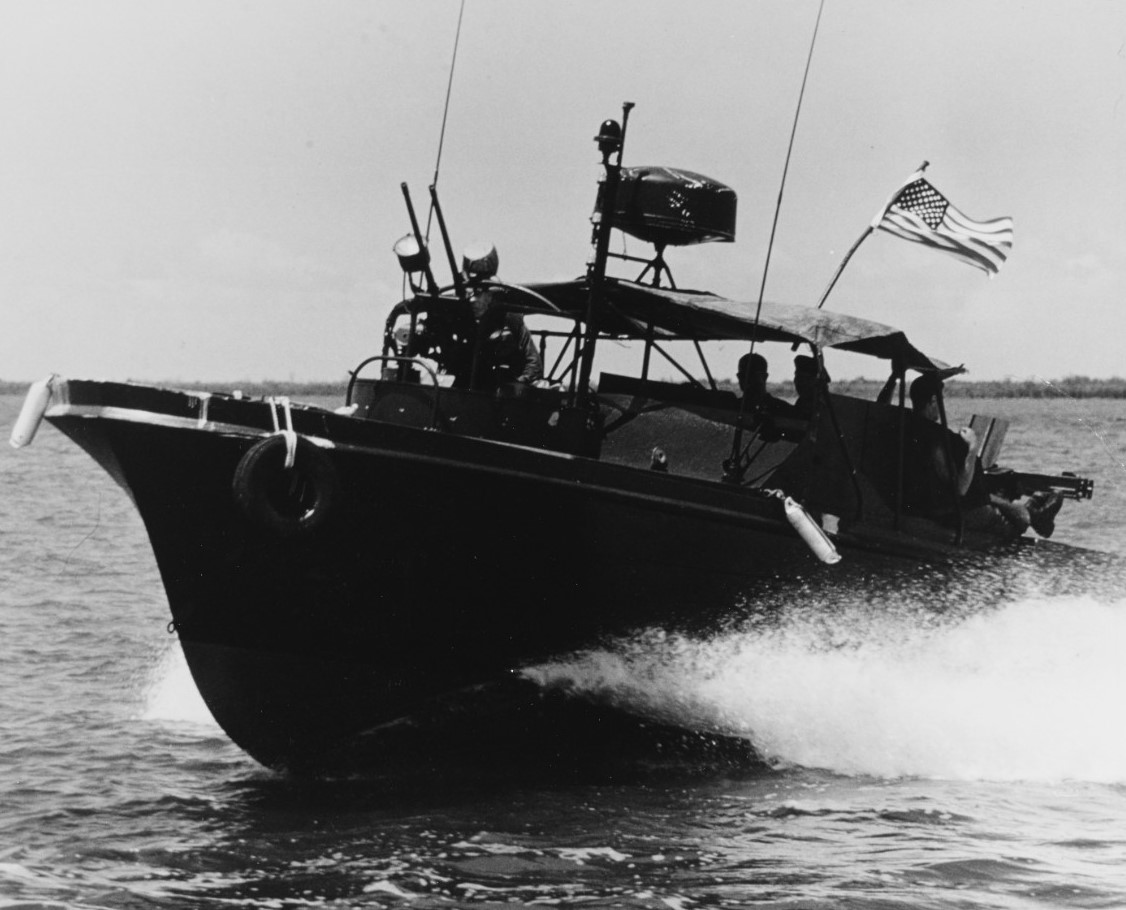
A PBR
As the French left, the US was drawn in, first as advisor and supplier to the South and then as a provider of combat troops. For all of the many flaws in the US war effort, planners were quick to grasp the importance of riverine forces in Vietnam, and from 1965 on, the USN operated a large riverine force, unparalleled since the Civil War a century earlier. There were several distinct efforts made, each focusing on a different task and with a different kind of craft.
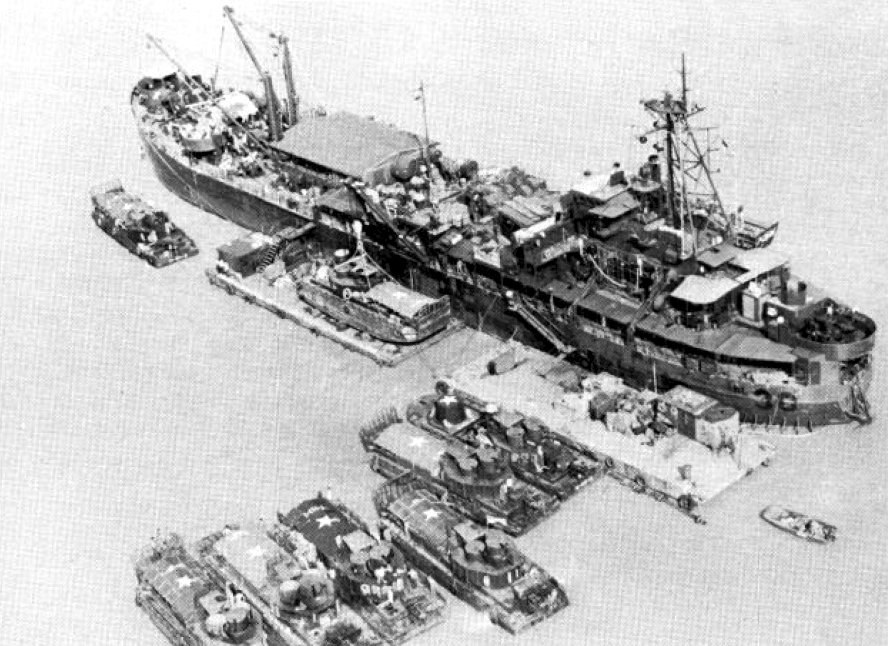
Barracks ship Askari with riverine craft
In February 1965, a North Vietnamese trawler was found unloading supplies at Vung Ro Bay in South Vietnam, the first tangible evidence of arms smuggling by the fleet of junks that fished and traded along Vietnam's coast. Two operations, Market Time and Game Warden, were swiftly set up to stop the flow of weapons to the Viet Cong. Market Time was concerned with offshore surveillance, searching coastal waters from the air and sea and inspecting suspicious vessels. The close inshore work was handled by the Patrol Craft, Fast, an armed version of a boat designed to carry the crew out to oil rigs, more popularly known as the "Swift Boat". Game Warden extended the patrols deeper into the Mekong Delta, searching the sampans used by both villagers and VC to move about the tangled maze of natural and man-made channels that housed a third of South Vietnam's population. Their lightly-armored Patrol Boats, River were extremely vulnerable to ambushes and mines, but high speed and ready support from aircraft and artillery allowed them to nearly shut down VC mobility in the Mekong. They also played a vital role in protecting the shipping channel to Saigon from ambushes and mines.
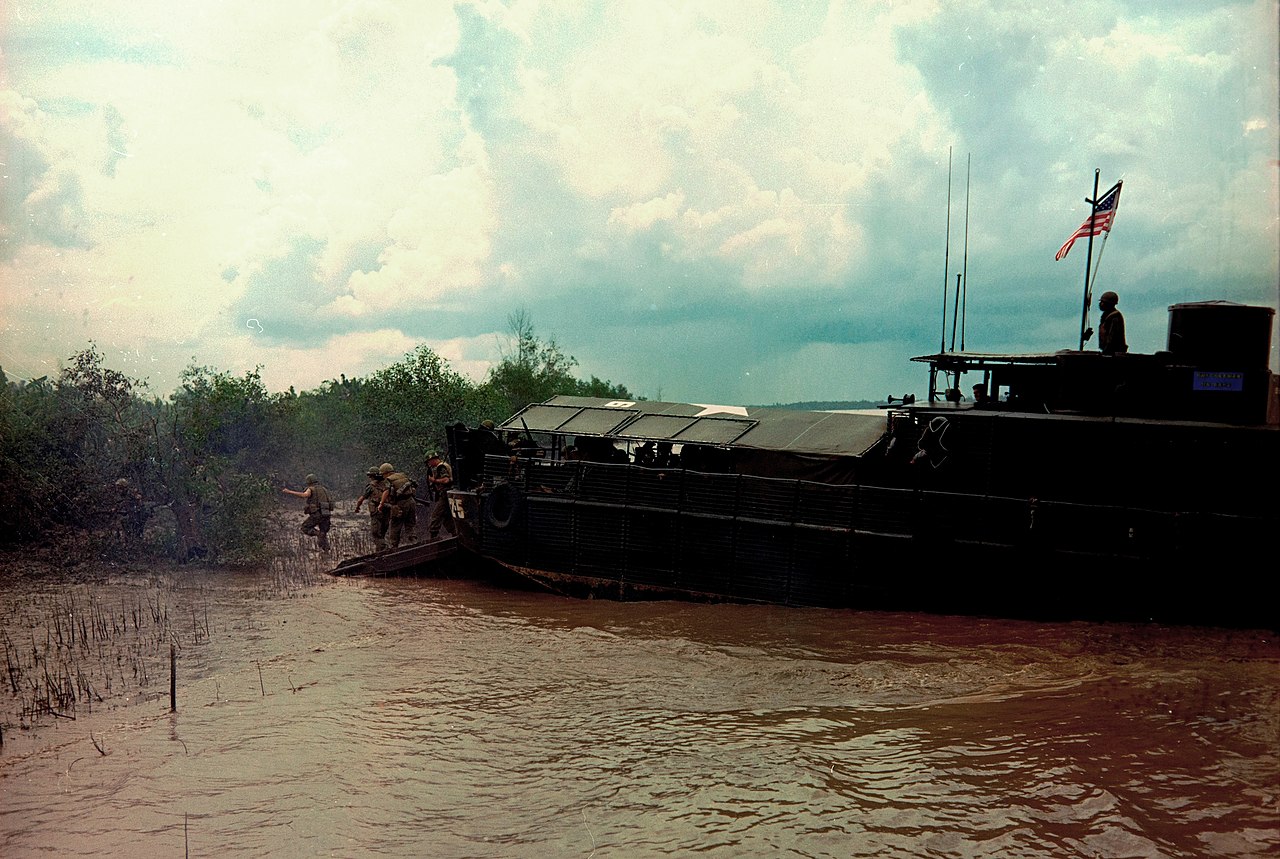
Troops of the 9th Infantry Division disembarking from an ATC
But as effective as the PCFs and PBRs were at their tasks, they were not equipped to take the fight to the VC in their hideouts. This would take troops, integrated with riverine forces for mobility and firepower, the only way to control the delta, particularly the dense mangrove forest of the Rung Sat Special Zone. These efforts began in 1966 with Operation Jackstay, when Marines from the Seventh Fleet penetrated deep into the Rung Sat. But permanent forces were needed for this task, leading to the creation of the Mobile Riverine Force. This integrated a brigade of the 9th Infantry Division with the Navy's River Assault Flotilla One to produce a unit capable of penetrating deep into the delta in pursuit of the VC. The Navy contribution was extensive, ranging from LCMs converted to Armored Troop Carriers that provided troop lift and firepower to the barracks ships that housed the entire force and could be moved up and down the major rivers as the situation dictated. Notable were the "Monitors",2 LCMs converted to provide extra firepower, ranging from batteries of machine guns to mortars, 105mm artillery, flamethrowers, and even heavy water cannons to disassemble VC dugouts. Mines were a constant threat, with most ambushes being opened by a command-detonated mine, and fast Assault Support Patrol Boats were fitted to sweep them.
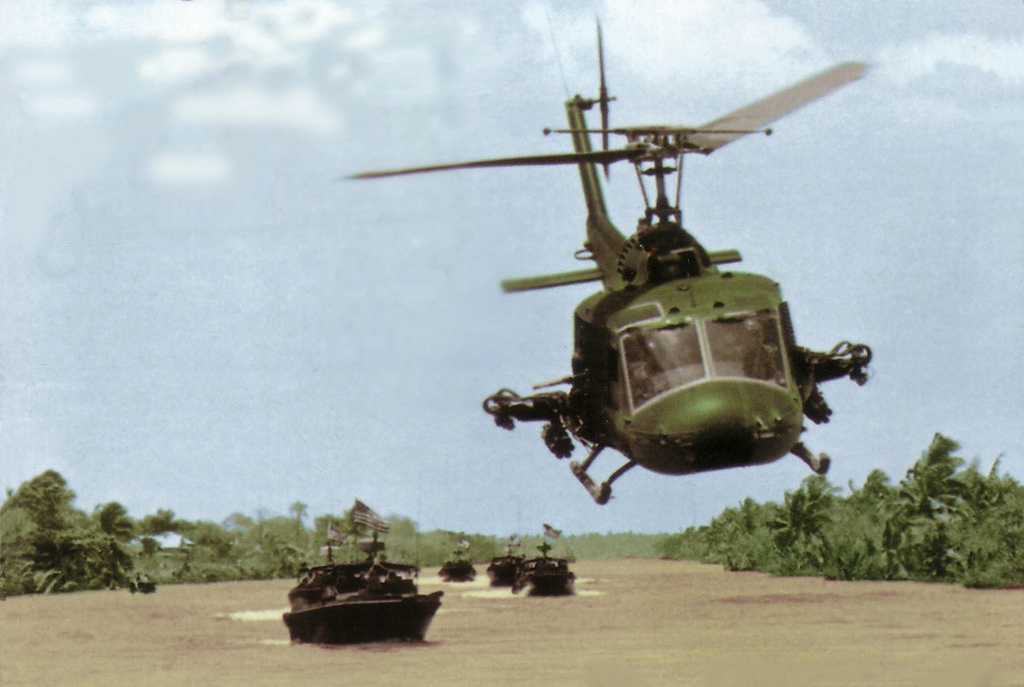
UH-1E of the Seawolves escorting PBRs
Nor were these forces the entirety of the Navy's contribution to the river war. The famous SEALs, still languishing in obscurity and dreaming of the day when they would be issued book deals just for showing up, worked extensively along Vietnam's rivers in ambushes and raids. For their size, the SEALs were the most highly-decorated unit of the war. To provide air support, the Navy established two special squadrons, HA(L)-3 Seawolves, flying UH-1 gunships, and VAL-4 Black Ponies, flying OV-10 Broncos. These were unique in the Navy's history, and disappeared after the end of the war.
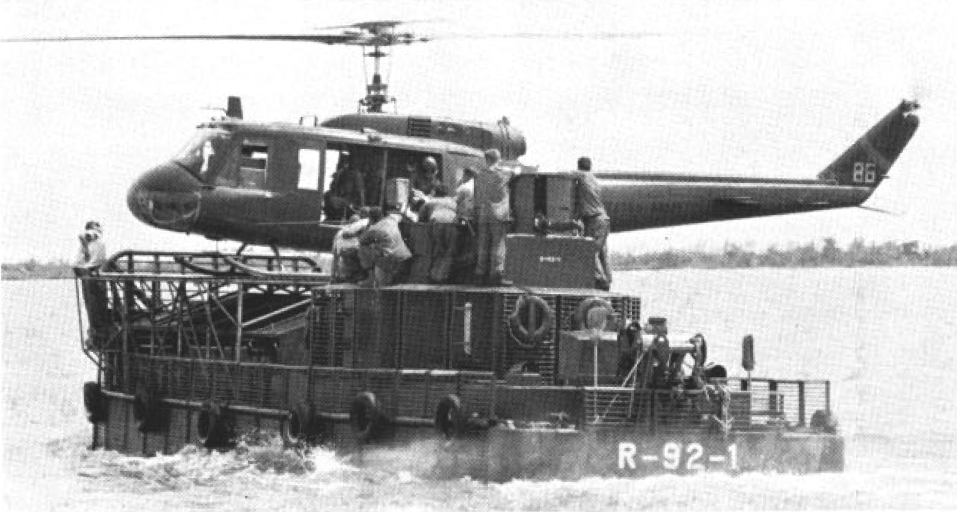
A Huey lands on an ATC in Vietnam
By 1968, all of these forces were proving highly effective, and Market Time and Game Warden had managed to essentially shut down the flow of arms via the open ocean into the Mekong Delta. The Tet Offensive used up most of the available supplies, and saw fierce fighting by the riverine force, most notably Task Force Clearwater on the Perfume River, which played a vital part in keeping the forces in Hue supplied when the Communist offensive cut their overland supply routes. To keep the pressure on, Elmo Zumwalt, recently appointed commander of naval forces in Vietnam, came up with a plan to cut off the remaining riverine strongholds, including a major route for supplies coming from ports in Cambodia through the upper Mekong. This operation, called Sealords, involved all of the American and South Vietnamese riverine forces, and proved quite successful.3
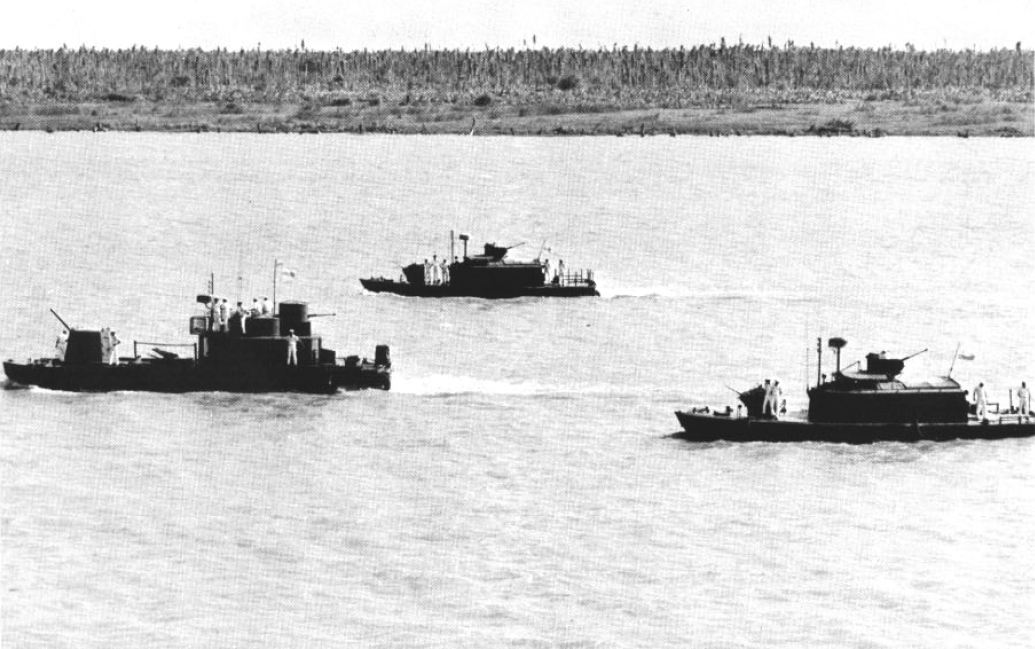
South Vietnamese riverine craft
Despite the successes of the riverine campaign, the American effort in Vietnam fell apart much as its French predecessor had. The whole thing was turned over to South Vietnam, and the Navy withdrew in 1973 with the rest of the US forces. The USN let this capability atrophy, as it so often has in the past, until the Iraq war showed a need for riverine forces again on that country's lakes and navigable waterways. Even with the drawdown in Iraq, a core capability has been kept, in acknowledgement of the fact that riverine warfare remains a vital component of sea power, just as it has been for millennia.
1 An earlier riverine campaign that used this approach was the attack on Fort Pikit in the Philippines in April 1945. The operation, improvised almost overnight, was credited with cutting a month off the campaign for the island of Mindanao. Details can be found in Volume 13 of Morison. ⇑
2 Named after the famous early American ironclad. ⇑
3 There are a lot of good works on the riverine war in Vietnam if you want more details. Some I consulted are US Navy Operations on Inland Waters and War in the Shallows. ⇑

Comments
I imagine most minesweeping techniques aren't effective against command detonated mines. Do you use some kind of boat mounted metal detector? How did it compare to route clearance on Afghan roads?
There's not much you can do against command-detonated mines. Sweep gear might be able to cut the wires, I guess. But those are usually tied into a bigger ambush, and you just have to make sure that your crew have shock-mounted seats, and hope to fight your way out.
It wouldn't have been an option in Vietnam, but could a similar operation now make use of imaging sonar and ROVs to defeat command detonated mines?
That's definitely something they'd make use of, although it certainly wouldn't be perfect. Anywhere we're likely to be fighting is likely to have a fairly cavalier attitude towards garbage disposal by throwing stuff in canals and rivers. Each of those is an accidental decoy for mines. If you could have the ROV do route clearance ahead of time, it would work a lot better (otherwise they could trigger an ambush by dumping a bunch of trash and hitting us while the ROVs are working on it) but that requires secure communications channels, which are hard to do from underwater.
I suppose it is to boats what IEDs are to land vehicles.
If there were an easy solution, we'd have found it in the Middle East.
Thanks for writing this!
One small typo: "known as each known as"
Typo fixed.
And this was a particularly interesting series to write. Trying to draw out as many threads on riverine warfare as I could lead to some odd places, but overall, I like the result.